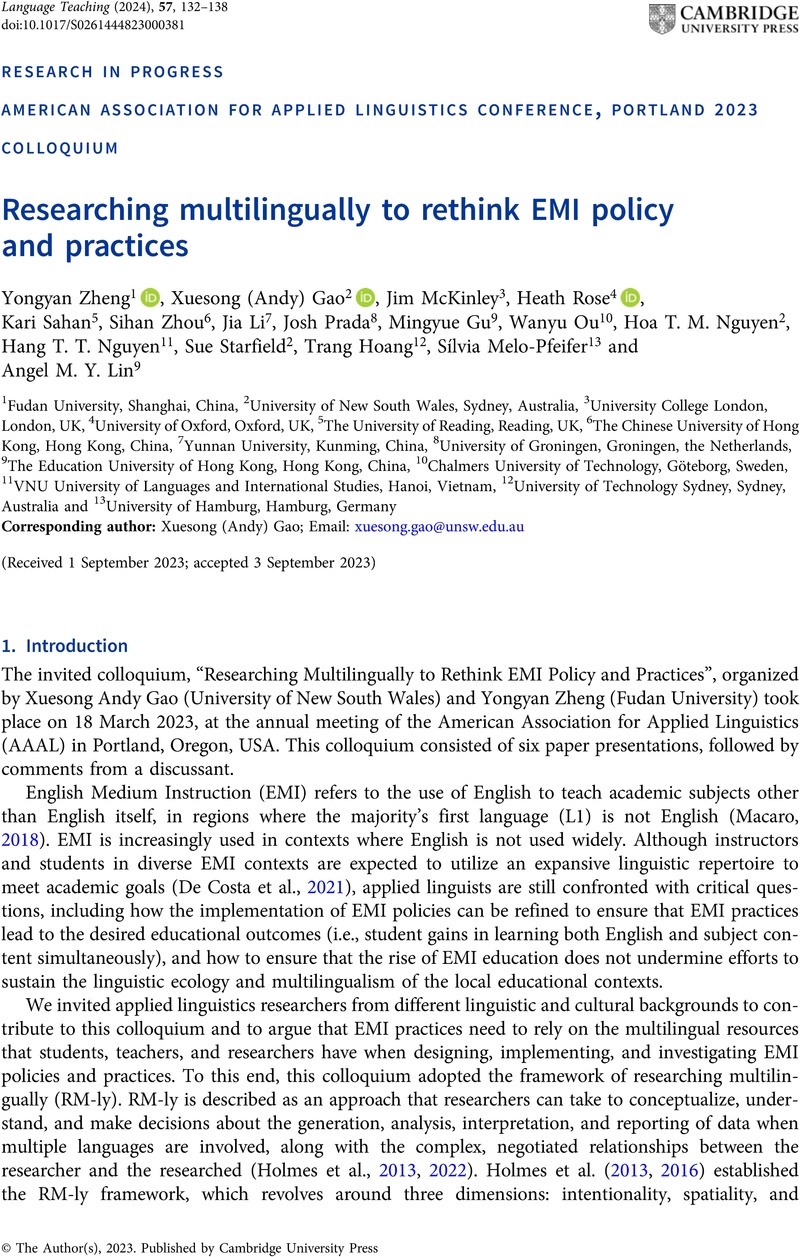Crossref Citations
This article has been cited by the following publications. This list is generated based on data provided by Crossref.
Itoi, Kiyu
2024.
Fostering Inclusive Learning and 21st‐Century Skills: Creating Translanguaging Spaces in University Content and Language Integrated Learning Courses.
International Journal of Applied Linguistics,
McKinley, Jim
2025.
Innovative Qualitative Methodologies in Multilingual Literacy Development Research.
Vol. 11,
Issue. ,
p.
171.
Chang, Sin-Yi
and
Kester, Kevin
2025.
From the inside out and outside in: a duoethnographic reflection on the borderlands of English-medium instruction.
International Journal of Qualitative Studies in Education,
p.
1.




